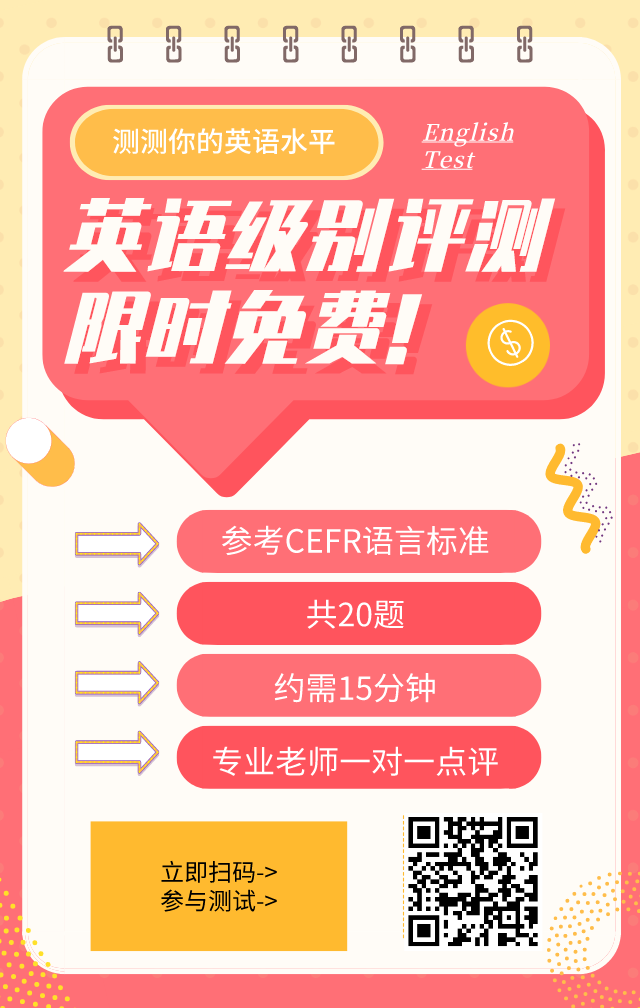Fostering Students’ Autonomous English(一)
时间:2009-10-12 00:00:00 来源:征文比赛 作者:郭丽丽
简述:《“平和英语杯”我的英语学习之路》应征文,作者:郭丽丽,来自浙江省临海市托阳小学
Fostering Students’ Autonomous English(一)
------Learning Ability in Senior High School
郭丽丽
1. Introduction
Presently, the fostering of students’ autonomous English learning ability is being paid much attention to in English teaching in
Therefore, in recent years more and more teachers of English are realizing the importance of fostering students’ autonomous English learning ability in the field of education. As the Chinese saying goes, “If you give a man a fish, you feed him for a day. If you teach a man to fish, you feed him for a lifetime”. Thus it seems necessary to foster students’ autonomous English learning ability.
Firstly, autonomous learning is the ultimate goal of education. Some educationalists believe that learning how to learn is the most basic and important objective of education. Since the present epoch is one with an explosion of knowledge and information, it is more essential than ever for people to master the basic skills of learning. The society where we are living today is developing very fast. Every day we face new things, new situations and changes. To adapt to the quickly changeable circumstances, people have to get rid of a lot of information. Thus it seems not enough for students to depend on school education only. At the same time, it is impossible for students to attend every kind of classes to keep pace with this new world. Life-long learning becomes more important for people to improve themselves consistently. It is autonomous learning ability that life-long learning requires. Take English language learning for example, leaving school does not mean the end of English language learning, but means the beginning of a further autonomous English learning. Thus it becomes necessary to foster students’ autonomous learning ability.
Secondly, autonomous learning is the final aim of language teaching and learning.
Language learning is an active and dynamic process. In order to realize the purpose of using a language, learners adopt different strategies to process the information during language learning, as well as supervise their own learning process. Language learning itself is a kind of behavior with purpose. The purpose of language learning is not for the mastery of language knowledge. In fact, the real purpose of language learning is for expressing oneself skillfully in a language and for completing kinds of tasks. What’s more important, it is for the mastery of learning strategies for one’s later learning. The purpose of language learning can also be called autonomous learning. So it is necessary for students to raise the ability of autonomous learning.
Thirdly, autonomous learning is necessary for enhancing the learning efficiency. In classroom teaching, autonomous learning is very important. Students need not only to be clear about their goals, listen to the teachers carefully, but also to participate in classroom activities actively and try to get the great extent input. Since classroom teaching itself has a limit, students cannot master knowledge and raise their ability only through the limit classroom teaching. The success of English teaching mostly relies on students’ autonomous learning after classes.
2. Theories on autonomous learning
2.1 Definitions of autonomous learning
As far as autonomous learning concerned, it is very difficult to define it because different educators have different views about it.
Holec defines autonomy as “the ability to take charge of one’s own learning” (Holec, 1981:3). As an advocator and pioneer of autonomous learning in language learning, he has greatly affected in the debate about autonomous learning.
Cotterall argues that learner autonomy should be seen as an essential goal of all learning and should include such aspects of language learning process as setting goals, selecting learning strategies, and evaluating progress (Cotterall, 2000:109).
Though the definitions of autonomous learning mentioned above are various, they have something in common. First, learners should be independent. Second, learners should take responsibility for their own learning. Third, learners should have abilities of self-management and control over cognitive process.
2.2 Characteristics of autonomous learning
From the definitions of autonomous learning mentioned above, it is not difficult to sum up the characteristics of autonomous learning in the field of language teaching and learning in
Motivation is the essential characteristic of autonomous learning. It includes “the psychological factors determining the amount of effort a learner is prepared to put into language learning” (Nunan, 1999:311). Autonomous learning is different from passive learning. Learners’ autonomous learning is based on the inner requirements for study. However, learners who are often asked to learn apt to be passive learners. In order to study autonomously, learners should be greatly motivated. There are mainly two aspects for learners’ inner requirements for study. One aspect is learners’ learning interest. Once learners are interested in learning, they will be more eager to learn and love to learn than ever before. Meanwhile, their learning efficiency will increase greatly. They will take part in learning actively. The other aspect is responsibility for learning. As a learner, his most important thing is to learn. If learners cannot realize that, they can hardly learn autonomously.
Learners should have the ability of controlling and regulating learning and actions. They should do self-planning, self-arranging, self-improving. That is to say, learners should autonomously set a goal of learning, make a learning plan, choose learning methods, get prepared for learning. During the learning activities, learners should summarize, evaluate, or remedy according to the result of learning. As the saying goes, “There is no royal road to learning.” It fully proves that learning is a hard and long process. Self-control in autonomous learning is an important means to ensure students’ success in learning, and a vital part in autonomous learning.
In the classes of autonomous learning, teachers and students are equal, and the relationship is democratic and harmonious. Teachers are the organizers and guiders in activities. Students can express their opinions freely. Besides, discussions can be carried out not only between teachers and students, but also between students and students.
Teachers cannot dominate the whole class as they did before. As a result, students’ personalities can be developed fully. If students are treated unequally in the classes, they will likely become tired of learning. As a consequence, they cannot learn effectively, and they can never become autonomous learners.
Learners always intend to be interested in challenges and searching for new challenges in life. During the process of autonomous learning, learners face challenging learning tasks bravely and are willing to deal with them. Learners will have lots of troubles to deal with in the future. Thus it is good for them to face some challenging learning tasks now.
In autonomous learning, students have the right to evaluate themselves. It refers that learners examine their learning and outcomes according to certain standards, and then regulate their learning behaviors. During the process of autonomous learning, only if learners evaluate themselves regularly or irregularly can learning steps be carried out forward orderly.
3. Fostering students’ autonomous English learning ability
3.1 Teachers roles and teaching strategies
Students who have good learning scores and high efficiency are active learners. To most extent, they depend on their own autonomy. The mastery of English is not out of teaching, but out of learning. Thus teachers should give the responsibility back to students. To learn independently, students should make up their minds to complete the tasks, and have some methods and strategies. As teachers, they have the responsibility to help students raise the awareness of autonomous learning, learn autonomously, master autonomous learning strategies, and get into the habit of autonomous learning.
During this process, teachers should make sure students have the need of participation and competence of performance. They should help students, not put pressure on them.
They need to create conditions to make sure that students learn autonomously. Besides, teachers should be good at putting themselves on the place of students and plan teaching activities meeting the needs of their psychology, knowledge level and competence of performance.
Teachers who master more knowledge and have stronger competence in every field, especially those academic teachers, can make good use of their academic knowledge to teach students formally. The teacher as resources plays an essential role in students’ mastering knowledge in a limit time. With the development of technology and explosion of knowledge, teachers’ roles as resources face challenges, but it cannot be completely canceled. The key to it is that what knowledge teachers teach and how they teach.
Nowadays, people can gain knowledge and information in more ways, and their learning styles are more colorful than ever before. For example, surfing on the Internet has been an important life style for modern people. People can break the limit of time and space, and gain a great deal of knowledge and information more freely. In the past, teachers were nearly the only or the main resources. However, things are all different today. Nevertheless, we cannot ignore that students are weak in collecting and dealing with information. Consequently, teachers should create good conditions for the students’ autonomous learning as resources. It requires teachers to offer some necessary conditions for students to collect information autonomously. Teachers should teach students how to collect and deal with information.
It is classroom teachers who know their students’ needs and interests, their likes and dislikes, their strengths and weaknesses, not any textbook writers. Textbooks are not suitable to an individual teaching situation. Hence, teachers should find ways to use the textbooks in order to meet students’ needs. In addition, teachers need to help students be aware of a wide range of alternative strategies and develop an awareness of learning styles.
本文链接:https://www.pinghe.com/AboutGLV/GLVCulture/WithGLV/2010-08-12/990.html
更多内容
- 缤纷四季之夏篇:清凉炎夏2010-07-12
- 瞧那美国人-第六章 像豪猪一样相处2010-03-15
- 周利人演讲:美国文化中的儒家理想 之一2010-02-02
- 与其讨厌 不如打败2010-01-13
- 禅屋,一个美丽的女人2009-12-18
马上评估您的学习费用



 全部课程
全部课程







 粤ICP备11066329号-2
粤ICP备11066329号-2
 粤公网安备 44040202000471号
粤公网安备 44040202000471号
